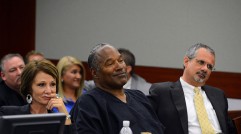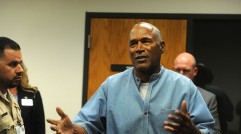The US Has Lost All the Jobs It Gained After the Obama-Era Recession
It took only five weeks for COVID-19 to wipe out all the job gains the United States economy has seen over the last 11 years after the Great Recession of 2008 and 2009, the most prolonged period of economic decline since World War II, according to a recently-published article.
As businesses are forced to close throughout the U.S., the number of Americans applying for state unemployment benefits has significantly increased. The Labor Department reported Thursday that new jobless claims totaled 4.427 million last week.
Meanwhile, previous reports claim the number of Americans who have filed for unemployment over the last five weeks is 26.45 million, exceeding the 22.442 million positions added to nonfarm payrolls since November 2009, when the U.S. economy began to add jobs back to the economy after the Great Recession.
Check these out!
- Signs of Life: States That Have Completed Phase 1 of 'Opening Up America Again'
- Trump: Suspension on Immigration Will Apply Only to People Seeking Green Cards
- Trump Extends Travel Restrictions to Mexico and Canada
"We are facing an unforeseen enemy, and today's report continues to show that these are challenging times for many Americans who want to get back to work," said Judd Deere, a White House spokesman.
"Because of President Trump's leadership and the American people's commitment to slow the spread, we are on a data-driven, responsible path to opening up America again," he added. "As we begin the phased approach, the Administration continues to move quickly to provide the benefits under the CARES Act that workers, families, and small businesses across the country need."
The official look at the U.S. unemployment rate for April until May 8 is still unavailable for an investor. Again, the Labor Department said layoffs were mostly at restaurants and bars, which have been closed by stay-at-home directives, based on its latest nonfarm payrolls report for March.
Payrolls plunged in nonfarm sectors by 701,000 last month, marking the first decline since 2010 and the worst fall since March 2009. Meanwhile, the unemployment rate spiked to 4.4% from 3.5%.
Still, Peter Boockvar, chief investment officer at Bleakley Advisory Group, expressed optimism for the slowdown of the dizzying pace of jobless claims as some states start to implement stay-at-home mechanisms and business closures.
"As the economy begins to reopen in May, whether the local shop or the factories that are lining up to do so in the coming weeks, we likely see the peak in claims as people get back to work," he said. "Again, the pace at which they will is the question."
Moreover, in a recent report by Latin Post, President Trump announced that some states in the U.S. are now ready to partially reopen their economy under Phase 1 as part of the plan to revive the country's economy in three phases.
In Texas, Gov. Gregg Abbott signed an executive order that mandates to slowly reopen the state under strict guidelines, which include social distancing of six-feet to be observed in parks and other areas.
The guidelines also include among the restrictions, gatherings of more than five people as well as the reopening of schools across the state until the end of the academic year. More importantly, people are strictly obliged to wear face masks.
As of this writing, the United States has already recorded 890,000 COVID-19 cases, with 50,372 deaths and 82,843 recoveries.
Until scientists come up with a universally accepted and effective cure and a vaccine for COVID-19, the United States will continue to lose jobs more than what it has gained after bouncing back from the Great Recession.
Subscribe to Latin Post!
Sign up for our free newsletter for the Latest coverage!














